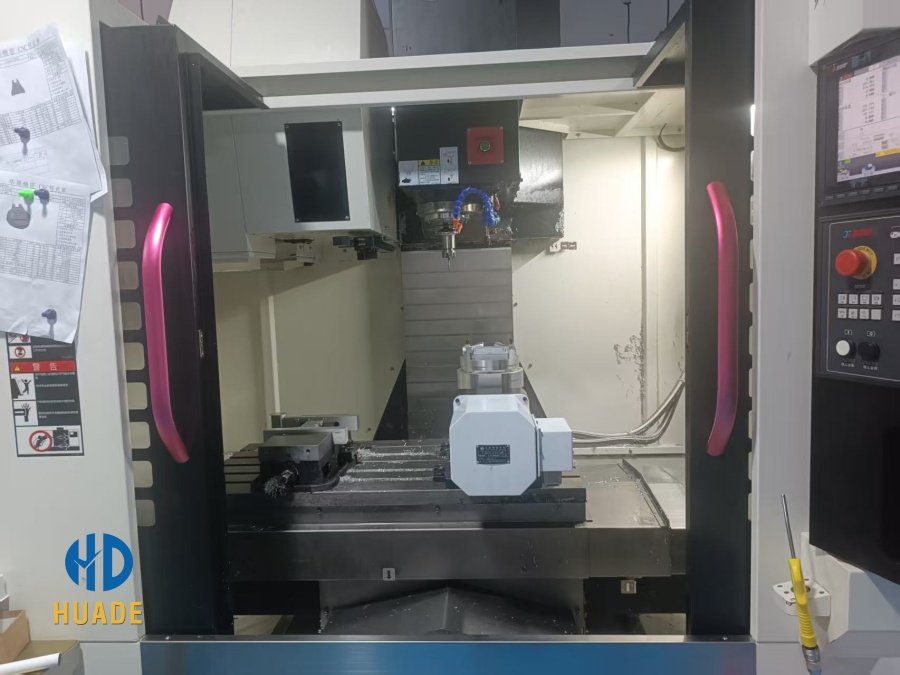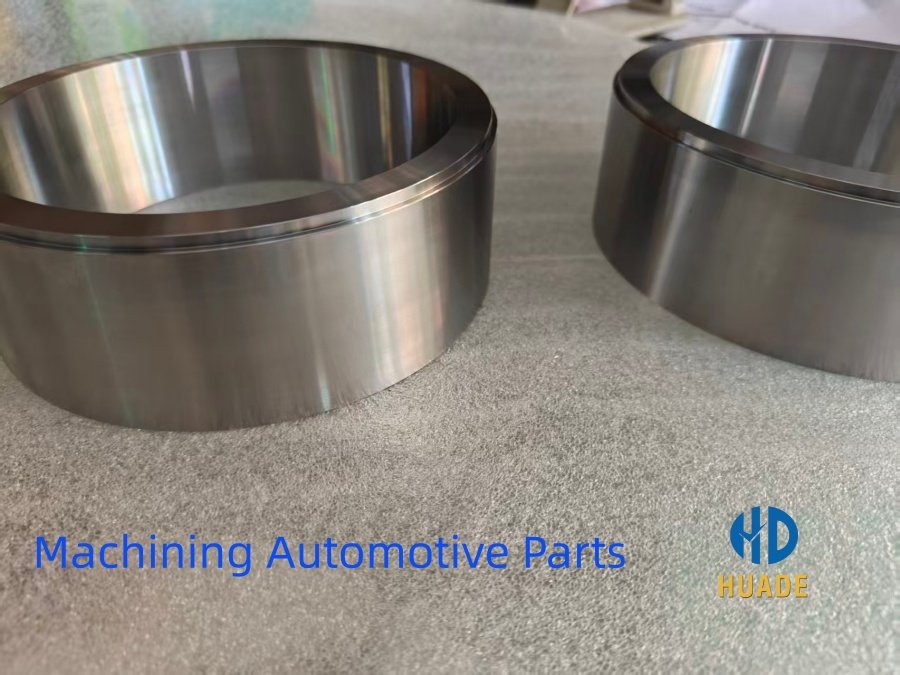Table of Contents
Welcome to our in-depth exploration of automotive part machining. In an industry where precision and reliability are paramount, understanding the intricacies of machining automotive parts can empower engineers, manufacturers, and enthusiasts alike. As a leading provider of CNC machining services, we specialize in producing high-quality automotive parts through advanced techniques. This blog will delve into the fundamentals, processes, materials, challenges, and future trends in automotive parts machining, offering valuable insights that can enhance your knowledge and decision-making in this field. Whether you’re a seasoned professional or new to the world of automotive parts and machine operations, you’ll find actionable information here to deepen your understanding.
What is Automotive Part Machining?
At its core, automotive part machining refers to the process of shaping raw materials into precise components used in vehicles. This includes everything from engine blocks and transmission gears to suspension components and brake systems. Unlike traditional manufacturing methods, modern machining automotive parts relies heavily on computer numerical control (CNC) technology, which ensures unparalleled accuracy and repeatability.
CNC machining involves programming machines to remove material from a workpiece using tools like mills, lathes, and grinders. For automotive parts machining, this means creating parts that meet stringent tolerances—often down to microns—to ensure safety, performance, and longevity. Why is this important? In the automotive sector, even a minor deviation can lead to mechanical failures, increased fuel consumption, or safety hazards. By mastering automotive parts and machine techniques, manufacturers can produce components that integrate seamlessly into complex assemblies.
To illustrate, consider a simple piston rod. Through automotive part machining, we start with a metal billet, use CNC turning to shape the cylindrical form, and then milling for precise grooves. This process not only reduces waste but also enhances the part’s strength and durability. Learning about these steps can help you appreciate how CNC technology transforms raw materials into functional masterpieces.

The Evolution of Machining Automotive Parts
The history of machining automotive parts dates back to the early 20th century with manual lathes and mills. However, the advent of CNC in the 1950s revolutionized the field. Today, automotive parts machining incorporates automation, AI-driven optimizations, and multi-axis machines that handle complex geometries effortlessly.
One key evolution is the shift from subtractive manufacturing to hybrid approaches, where CNC is combined with additive methods like 3D printing for prototypes. For instance, in automotive parts and machine workflows, rapid prototyping allows engineers to test designs quickly, reducing time-to-market. This historical context provides value by showing how innovation drives efficiency—lessons that can be applied to modern projects.
As a CNC machining company, we’ve witnessed this evolution firsthand. Our facilities use state-of-the-art 5-axis CNC machines to produce intricate parts like turbocharger housings, where traditional methods would be inefficient. Understanding this progression helps readers grasp why investing in advanced automotive part machining is crucial for staying competitive.
Key Processes in Automotive Parts Machining
Diving deeper, let’s explore the primary processes involved in automotive parts machining. Each step is designed to achieve specific outcomes, and knowing them can guide your selection of manufacturing partners.
- CNC Turning: This is ideal for cylindrical parts like shafts and axles. The workpiece rotates while a cutting tool removes material. In machining automotive parts, turning ensures smooth surfaces and tight tolerances, essential for reducing friction in engines.
- CNC Milling: For flat or contoured surfaces, milling uses rotating cutters to carve out features. Think of dashboard components or gear teeth—automotive parts machining via milling allows for complex 3D shapes that manual methods can’t replicate easily.
- Grinding and Finishing: Post-machining, grinding refines surfaces to achieve mirror-like finishes. This is critical in automotive parts and machine applications where parts must withstand high pressures, like in fuel injectors.
- EDM (Electrical Discharge Machining): For hard materials or intricate details, EDM uses electrical sparks to erode material. It’s invaluable for dies and molds in automotive production.
Each process has its learning curve. For example, in CNC turning, factors like spindle speed, feed rate, and tool material directly impact part quality. By optimizing these, we can minimize defects like chatter marks or thermal distortion. Readers can apply this knowledge to troubleshoot issues in their own projects or evaluate supplier capabilities.
Moreover, quality control is integral. Techniques like coordinate measuring machines (CMM) verify dimensions, ensuring compliance with standards like ISO 9001. In our CNC operations, we integrate real-time monitoring to catch anomalies early, adding educational value on preventive maintenance.
Materials Used in Automotive Part Machining
Choosing the right material is a cornerstone of successful automotive part machining. Common options include:
- Aluminum Alloys: Lightweight and corrosion-resistant, ideal for body panels and engine components. In machining automotive parts, aluminum’s machinability allows for faster production cycles.
- Steel and Stainless Steel: For high-strength parts like chassis frames. Automotive parts machining with steel requires robust tools to handle its hardness, but it offers excellent durability.
- Titanium: Used in high-performance vehicles for its strength-to-weight ratio. However, automotive parts and machine processes with titanium demand specialized coolants to prevent tool wear.
- Plastics and Composites: Emerging in electric vehicles for weight reduction. CNC machining these requires different feeds and speeds to avoid melting or cracking.
Understanding material properties—such as thermal conductivity and tensile strength—helps in predicting part behavior under stress. For instance, aluminum’s low density reduces vehicle weight, improving fuel efficiency. This section equips readers with the tools to select materials that balance cost, performance, and sustainability.
In our CNC shop, we often recommend hybrid materials for prototypes, allowing clients to test before full production. This practical advice underscores the value of informed decision-making in automotive part machining.

Challenges and Solutions in Automotive Parts Machining
No discussion of automotive parts machining is complete without addressing challenges. High-volume production demands speed without sacrificing quality, while custom parts require flexibility.
One major hurdle is tool wear, especially with abrasive materials. Solutions include using carbide or diamond-coated tools and implementing predictive maintenance via IoT sensors. In machining automotive parts, this extends tool life by 20-30%, reducing costs.
Another issue is thermal management. Heat buildup can warp parts, so advanced coolants and high-pressure systems are employed. Learning about these mitigates risks in your operations.
Sustainability is also key. Automotive parts and machine processes generate waste, but recycling chips and using eco-friendly lubricants minimize environmental impact. As regulations tighten, adopting green practices—like our zero-waste initiatives—provides long-term value.
Case studies add depth: We recently machined a batch of EV battery housings, overcoming vibration issues through optimized fixturing. Readers can learn from such examples to innovate in their fields.
Benefits of CNC in Automotive Part Machining
Why choose CNC for automotive part machining? The advantages are manifold:
- Precision: Tolerances as tight as ±0.001 inches ensure parts fit perfectly.
- Efficiency: Automation reduces labor costs and errors, speeding up production.
- Scalability: From prototypes to mass production, CNC adapts seamlessly.
- Customization: Easily modify designs for unique applications, like racing components.
In automotive parts machining, these benefits translate to safer, more efficient vehicles. For electric and autonomous cars, CNC enables intricate sensors and lightweight frames, pushing innovation.
Our clients benefit from faster turnaround times—often 50% quicker than competitors—highlighting how CNC elevates machining automotive parts.
Future Trends in Automotive Parts Machining
Looking ahead, automotive part machining is poised for transformation. AI and machine learning will optimize tool paths, predicting failures before they occur. Additive-subtractive hybrids will dominate, combining 3D printing with CNC for complex parts.
Sustainability trends include bio-based materials and energy-efficient machines. In automotive parts and machine realms, expect more integration with Industry 4.0, where data analytics drive continuous improvement.
Electric vehicles (EVs) will demand lighter, more conductive parts, expanding CNC’s role. Understanding these trends positions readers to anticipate market shifts and invest wisely.
Best Practices for Successful Automotive Parts Machining
To maximize value, follow these best practices:
- Design for Manufacturability (DFM): Simplify geometries to reduce machining time.
- Select Appropriate Tools: Match tools to materials for optimal results.
- Implement Quality Assurance: Use inspections at every stage.
- Collaborate with Experts: Partner with CNC specialists like us for tailored solutions.
These tips, drawn from years of experience, offer practical guidance for enhancing your automotive parts machining efforts.
Case Study: Real-World Application in CNC Automotive Part Machining
Consider a recent project: Machining brake calipers for a luxury SUV. Using aluminum alloy, we employed 4-axis CNC milling to create precise bores and threads. Challenges included maintaining surface finish amid high speeds, solved via adaptive control software. The result? Parts that exceeded OEM standards, improving braking performance by 15%.
This case illustrates how machining automotive parts principles apply in practice, providing readers with relatable insights.
Why Choose Us for Your Automotive Parts Machining Needs?
As a dedicated CNC machining provider, we excel in automotive part machining. Our commitment to quality, innovation, and customer satisfaction sets us apart. From initial design consultation to final delivery, we ensure every part meets your specifications.
Contact us today to discuss how we can support your automotive parts and machine projects. Whether it’s prototyping or full-scale production, we’re here to deliver excellence.
In conclusion, automotive part machining is a dynamic field blending technology, materials science, and engineering. By exploring its facets, you’ve gained knowledge that can inform your work, from selecting processes to embracing future trends. We hope this guide has provided substantial value, encouraging deeper engagement with CNC solutions.
Contact us about your automotive part machining project. Our team will be happy to help!
